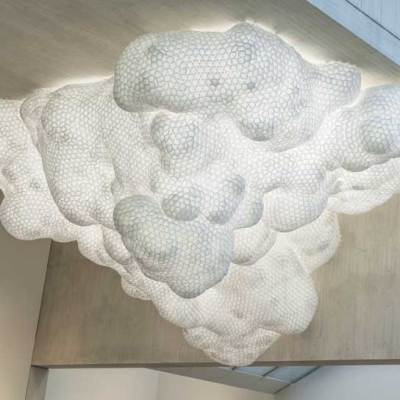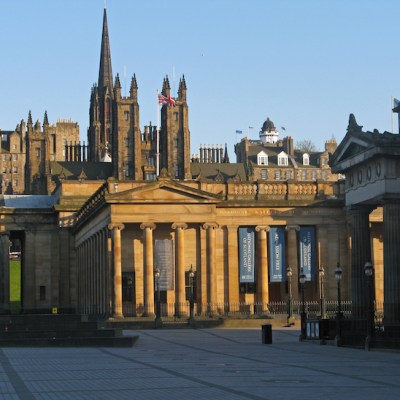The Beyeler Foundation is hosting a new exhibition dedicated to Gustave Courbet, which celebrates the realist artist’s innovative handling of paint. We spoke to the curator Ulf Küster to find out more.
Click here for a gallery of highlights…
Can you tell us a bit about the exhibition?
Courbet is one of the founding fathers of modernism. He was one of the first artists who publicly claimed to be dependent only on his individuality. For him art had to be essentially provocative and taboo-questioning. Probably for the first time, the treatment of paint as material became as important as the depicted motif in his work – arguably a first step towards abstraction.
In this exhibition, we will concentrate on his revolutionary new ways of landscape painting; his self-portraits; his nudes in the water, as well as on his free and non-conventional use of paint.
What makes this a distinctive show?
Many of these paintings have never been exhibited before, or are rarely seen. The famous/infamous painting L’Origine du monde is here exhibited in Europe for the first time outside France. But most of all it is an opportunity to appreciate Courbet’s paintings on white walls in daylight, in an architectural setting inspired by and dedicated to modern art.
How did you come to curate this exhibition?
As an art history student I specialised in 19th-century art. Knowing how much modern and contemporary artists depend on the model of personalities like Courbet, and how much they are influenced by his work, it’s a dream come true to be involved. Looking back at the beginning of my career, and considering my specialisation, I consider it a lucky coincidence but also quite natural that it should be me who is now curating this Courbet exhibition. Of course I hope that I don’t sound too self-absorbed!
What is likely to be the highlight of the exhibition?
For many, L’Origine du monde hung freely in the context of Courbet’s work will be a highlight. And in my opinion they are totally right. Apart from that, the highlight for me is the entire exhibition itself; Courbet’s work, this explosion of paint as material, the paintings of water and of snow.
And what’s been the most exciting personal discovery for you?
Two paintings, neither of which I had ever seen before: A Source du Lison from a private collection, in impeccable condition, showing how Courbet moulded geological structures in paint. And one of the few paintings the Barnes Collection can lend because it was a work Barnes kept in his private apartment: La Fileuse bretonne, a beautiful landscape with a shimmering evening sky, quite large and almost too idyllic. The first painting was last on public display in 1930, and the second one (apart from making rare appearances in the context of the Barnes collection) was last seen with other Courbet paintings in 1873 in Vienna.
What’s the greatest challenge you’ve faced in preparing this exhibition?
Handling the huge amount of literature on Courbet, especially since I had to publish a catalogue essay as well an introductory book on the artist and his work. I did it, but I have to apologise to all who I haven’t quoted…
How are you using the gallery space? What challenges will the hang/installation pose?
The exhibition will be hung thematically and by contrast. There will be spaces devoted to specific aspects of Courbet’s works, like his numerous and exciting self-portraits, but also some thematic juxtapositions – nudes with dark sources and grottoes, waves with winter landscapes – to underline his mastery in the application of paint to depict subjects like water and snow.
Which other works would you have liked to have included?
Quite essential for any Courbet exhibition would be L ’Atélier du peintre, his famous manifesto painting, but it is both too big and too fragile to leave Paris. But again, Courbet was one of the first who claimed that every painting of his would be a manifesto of his art…and we have a considerable number of masterpieces in the show!
‘Gustave Coubet’ is at the Beyeler Foundation, Basel, from 7 September 2014–20 January 2015.




